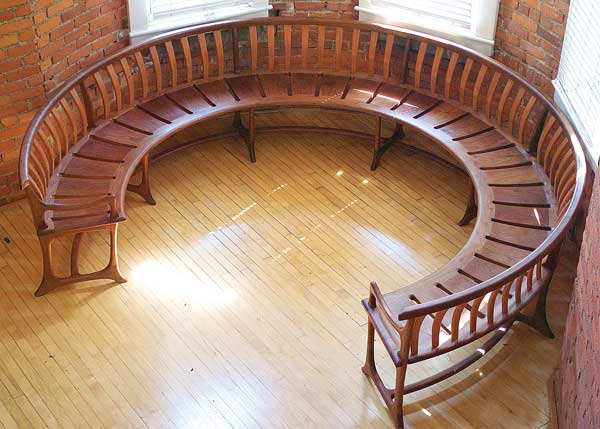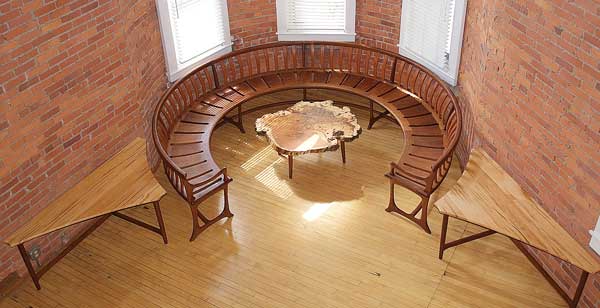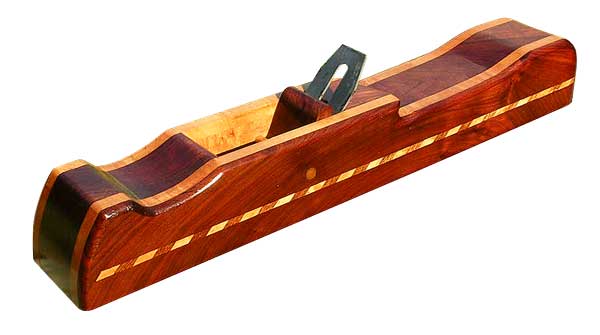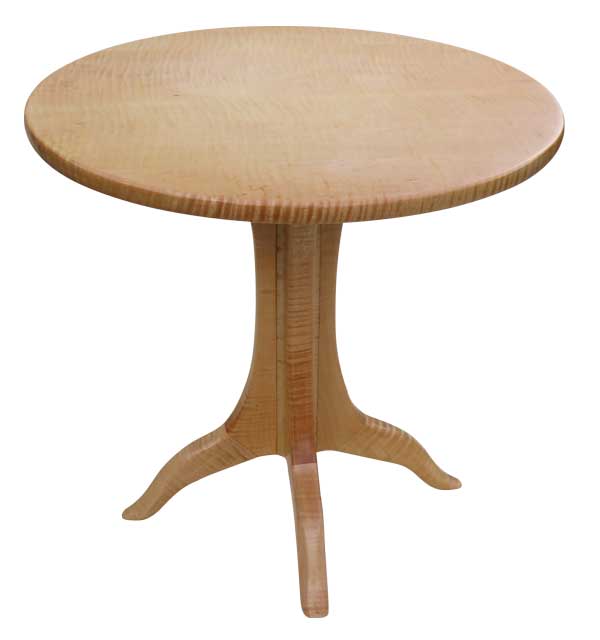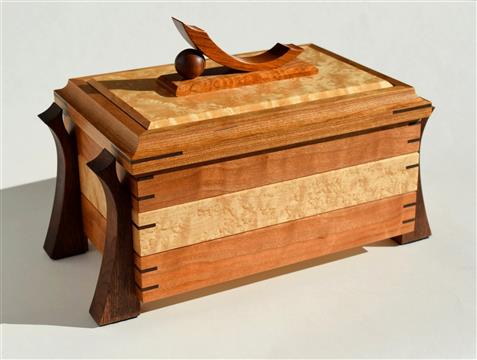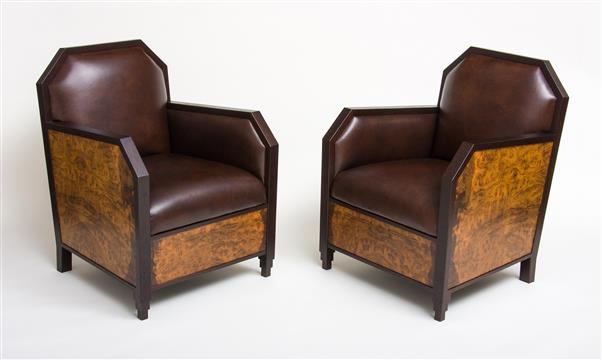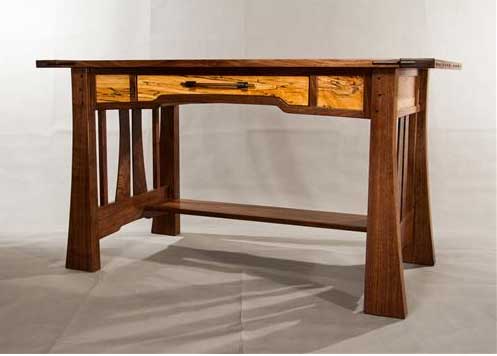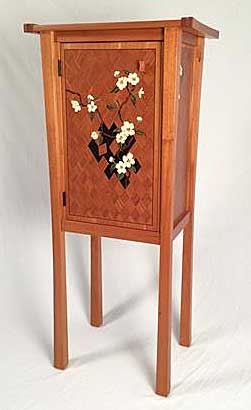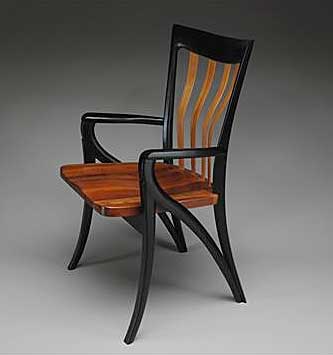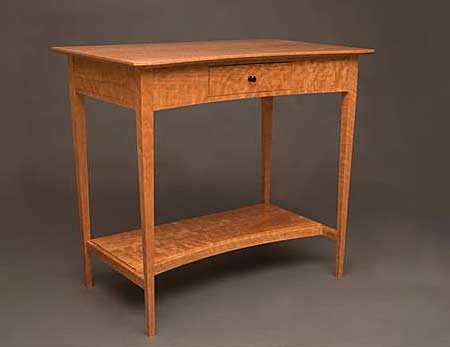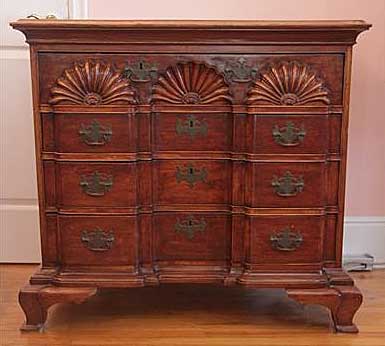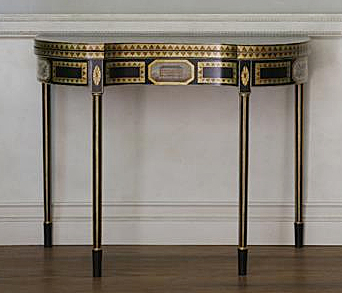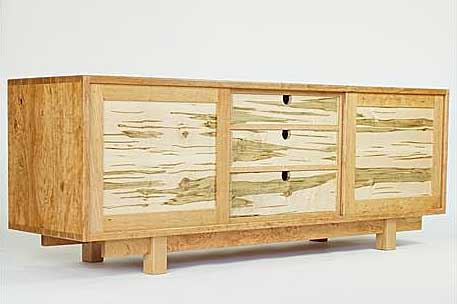We may receive a commission when you use our affiliate links. However, this does not impact our recommendations.
With so many excellent entries in the 2016 PWM Excellence Awards, selecting the Editors’ Choice winners and Grand-prize winner was incredibly difficult. All the editors and contributors have different aesthetic tastes, and the excellent craftsmanship displayed in the top vote getters didn’t help settle the discussions. In several cases the winner was chosen by a margin of a single vote. But choices had to be made, so here they are: the Grand-prize winner, and the Editors’ Choice and Readers’ Choice winners in each of our five categories.
Grand Prize
Alex Sutula; Cleveland, Ohio
Circular Seating;10′ diameter x 35″ h
Though many emulate the organic-looking joinery of Sam Maloof’s work, to do so on a piece of this scale? Well, we found that impressive indeed. Plus, the seating so perfectly complements the space for which it was intended that we were convinced it was the winner. It was constructed in three pieces and was assembled on-site.
Alex Sutula became a full-time professional woodworker about eight years ago after graduating from the University of Dayton with a business degree. He figured it would be easier to start out in the craft he loves rather “than one day have to walk away from the financial security and stability a more traditional job would provide.”
So he set up shop in a 400-square-foot garage in Cleveland and had moderate success selling work at art festivals around the region. He now shares a 900-square-foot shop, which gives him not only more space and access to more tools and machinery, but the luxury of someone off whom to bounce new ideas, he says.
“I build the way I do mostly out of fear…I am afraid a client would see a tool mark, a blotch of glue, inconsistent spaces, ill-fitting components and inquire as to why it is there? So I end up putting in a lot of time to make sure it’s a polished piece inside and out,” he says.
furnituremakercleveland.com
Instagram: @furniture_makers
Boxes & Smalls
Editors’ Choice:
Phillip Schmidt; Los Angeles, California
Arts & Crafts Cedar Chest; 20″ d x 35-3⁄4″ w x 21-1⁄2″ h
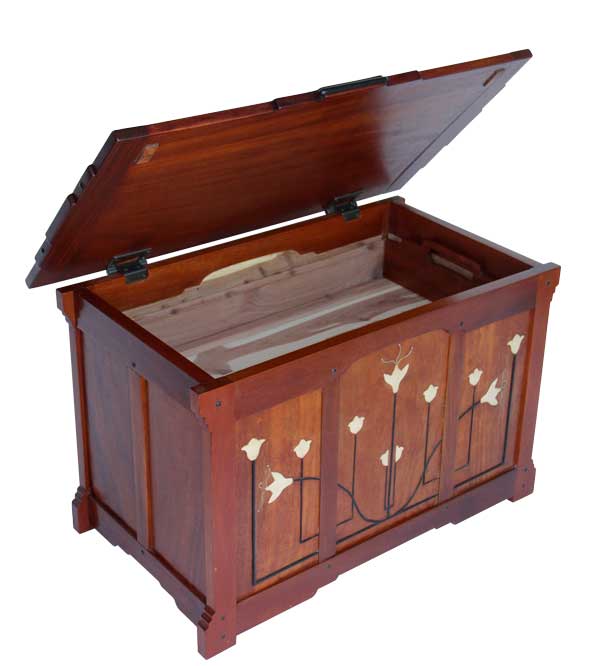
Philip Schmidt’s Arts & Crafts Cedar Chest is our Editors’ Choice winner in the Boxes & Smalls category
Phillip Schmidt has his daughter to thank for his award-winning piece; she encouraged him to design his own furniture rather than continue to reproduce work shown in Wallace Nutting’s “Furniture Treasury.”
So, drawing on inspiration from the Arts & Craft tradition (and in particular the designs of Charles and Henry Greene), he came up with this Honduran and African mahogany chest with ebony, basswood and .999 silver inlay. The floral inlay motif is a nod to the designs of Harvey Ellis, but was mostly inspired by a vase in Schmidt’s house.
Schmidt caught the woodworking bug more than 50 years ago from a high school shop teacher and pursued the craft in his spare time when his day job in the aerospace industry allowed. Now that he’s retired, he plans to take a few woodworking classes (because, he says, he has to catch up with his daughter’s shop skills).
Readers’ Choice:
Kenneth Bakley, Jr.; Sewell, New Jersey
Jointer Plane; 3-1⁄2″ w x 23-1⁄2″ l
Kenneth Bakley began “serious” woodworking (as he calls it) about 15 years ago with small boxes, then a portable writing desk, then a dovetailed step stool for his daughter. And when possible, he began making instead of buying tools when he needed them. Bakley has made his own mallets, marking gauges, a tool chest and bench, as well as a router table and drill press. And recently he began making planes, including a rabbet plane and this walnut, maple and mahogany jointer that features shop-made inlay.
But that’s not all builds for the shop – he also puts his homemade tools to work; right now, Bakely is making a “Gwent” game table for a co-worker, based on the card game from “The Witcher” series by Andrzej Sapkowski.
Seating
Editors’ Choice:
Derek Cohen; Perth, Australia
Hans Wegner’s ‘The Chair’; 30″ d x 24″ w x 20″ h
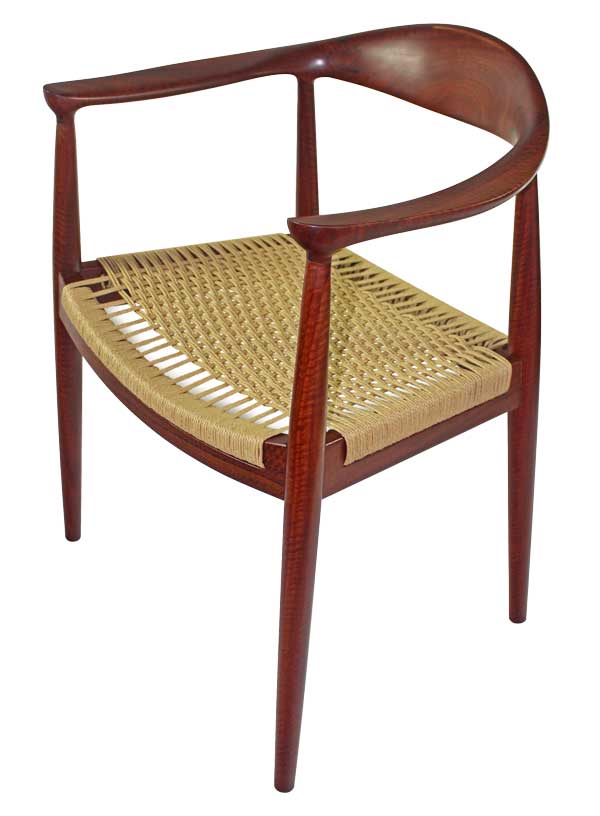
Derek Cohen’s gorgeous reproduction of Hans Wegner’s iconic “The Chair” was the Editors’ Choice winner in Seating.
Two of our judges called the execution of this copy of an iconic piece “perfect” – but what’s more astounding is that Derek Cohen did his with hand tools; the production versions were made with machinery and specialized jigs.
The only difference we can see is the seat; Wegner’s were caned (and some versions had solid seats), whereas Cohen used woven Danish cord (a material used in other Wegner pieces). It is a truly stunning homage to the influential Danish designer’s work.
Cohen, in addition to his work as a child psychologist, teaches hand-tool classes and has written a number of instructional articles, tool reviews and more. He’s also designed a full line of commercial marking knives that are made and sold by Vesper Tools.
inthewoodshop.com
Readers’ Choice:
Tom Hollis; Sewell, Winston-Salem, North Carolina
Side Chair; 18″ d x 20″ w x 40″ h
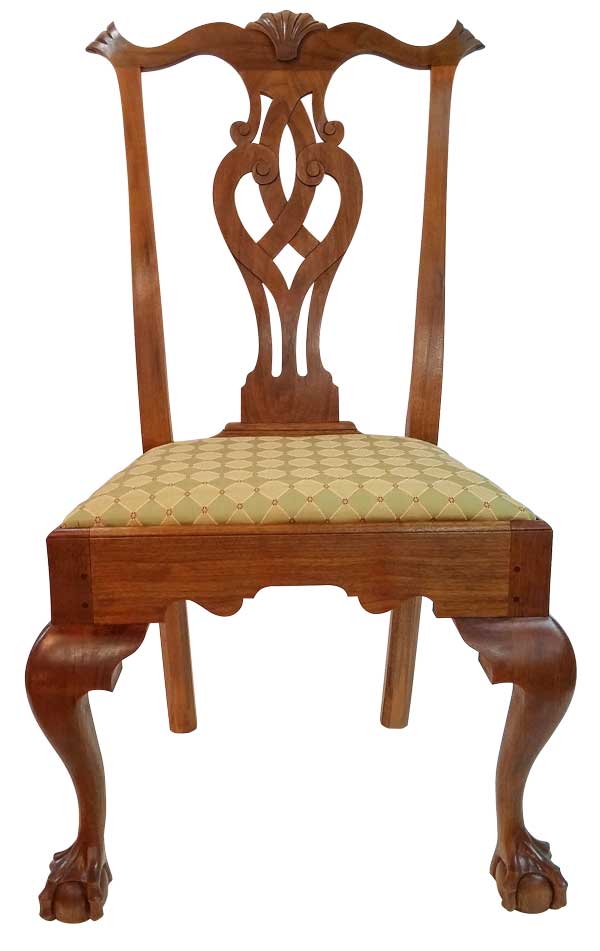
Tom Hollis’ side chair is the Readers’ Choice winner for seating (his piece was also a close second in the editors’ voting).
Tom Hollis credits Lonnie Bird with much of his woodworking success, calling him “a spectacular teacher.” That success is on fine display in this walnut reproduction of an 18th-century Pennsylvania chair with a hand-carved shell motif and ball-and-claw feet, and a pierced and carved back splat.
Hollis, who has been a woodworker for 25 years, has designed and built a few contemporary furniture pieces, but says he’s most inspired and challenged by the curves and carvings of 18th-century furniture – a look he says feels timeless. A primary goal with every one of his projects, he says, is to stretch his skills by learning a new woodworking technique.
tomhollis.com
Tables
Editors’ Choice:
Craig Thibodeau; San Diego, California
Art Deco Chess Table; 24″ d x 24″ w x 34″ h
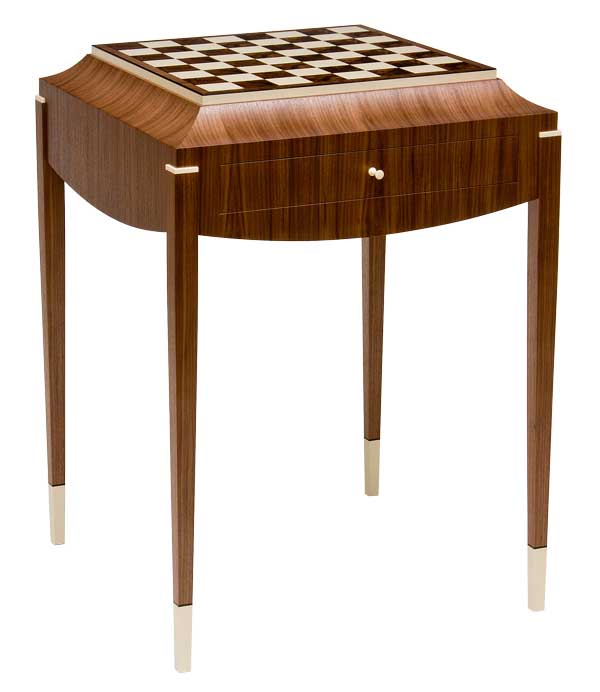
Craig Thibodeau’s Chess Table was the clear Editors’ Choice winner in the Tables category (and look for an article from Thibodeau in an upcoming issue).
You’ve likely seen Craig Thibodeau’s work (including this table) before; he wrote an article on its cove-moulded profile for Fine Woodworking, has had his work featured in numerous other magazines and has won many awards for his work, including grand prize in the 2016 Veneer Tech Craftsman’s Challenge.
This stunning table is veneered in quartersawn walnut with a playing surface of walnut burl and holly veneer decorated with ebony and holly trim, and features a drawer for chess piece storage. The walnut-veneered legs are capped with holly feet banded with ebony string inlay to create a more delicate feel.
Thibodeau studied mechanical engineering in college and has taken woodworking instruction with Paul Schurch, Patrick Edwards and Brian Newell.
ctfinefurniture.com
Readers’ Choice:
Jeff Clark; Elon, North Carolina
Maloof Side Table; 24″-dia. x 20″ h
This tiger maple side table was inspired by the work of Sam Maloof, who Jeff Clark counts as a primary woodworking inspiration, along with Wharton Esherick, George Nakashima, Michael Fortune, Seth Rolland, Judson Beaumont and other modern notables.
After getting hooked by his father’s restoration work and his eighth-grade shop class, Clark took a number of woodworking classes over the years, and served as vice president of the Piedmont Triad Woodturners Association from 2011-2014. He counts “rising to a challenge” among the things that drive him. So, with only a few woodworking classes under his belt, but after reading that a Maloof-inspired rocker was “one of the pinnacles of woodworking,” he signed up for a course therein. “There were three of us taking the course and I was much too inexperienced and intimidated, as the others in the course were much more advanced woodworkers,” he says. But he was the first to complete his rocker. That experience “provided the confidence that I can build anything based on a photo,” Clark says.
Casework, Cabinets & Bookshelves
Editors’ Choice:
John Bowling; Mechanicsville, Maryland
Half-scale William & Mary Highboy; 11″ d x 19″ w x 32″ h
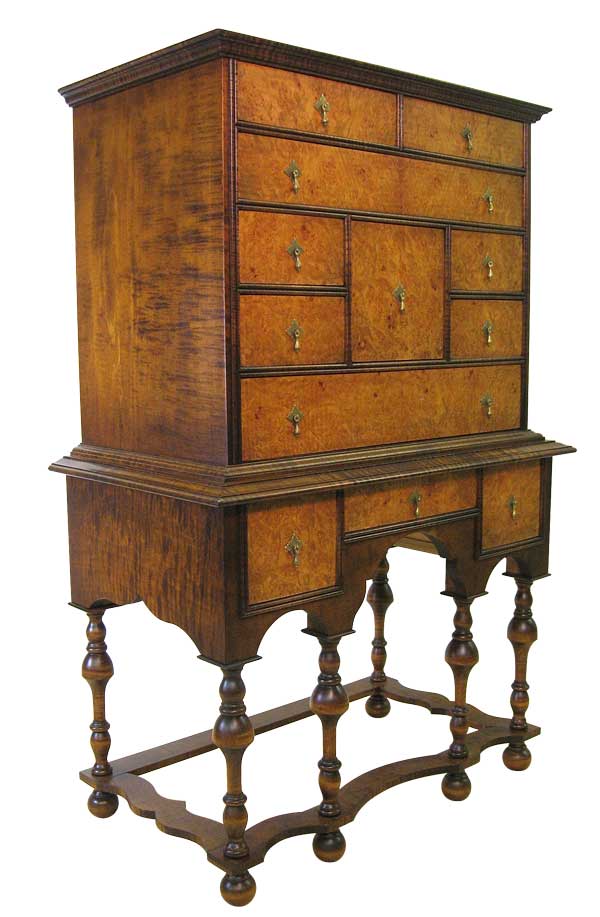
John Bowling’s half-scale William & Mary Highboy is the Editors’ Choice winner in Casework, Cabinets & Bookshelves.
The only changes from the inspiration piece to this half-scale tiger maple and maple burl period highboy is the number and arrangement of the drawers in the top section, to emulate the smaller footprint of a spice chest. The brasses are from Londonderry Brasses.
John Bowling began woodworking as a teenager, working in the stair shop of his father’s building supply and lumberyard. After graduating from the Roberto Venn school of Luthiery in 1998, he honed his precision skills as an acoustic guitar maker at Collings Guitars before turning to antique restoration.
Since 2007, Bowling has owned Dellabrook Woodworking & Restoration, where he builds on average about 40 pieces for customers per year (this highboy is one of them), along with restoration work.
dellabrookwoodworking.com
Readers’ Choice:
Richard Wile; Bedford, Nova Scotia
Cantilevered Night Stand; 18″ d x 16″ w x 21″ h
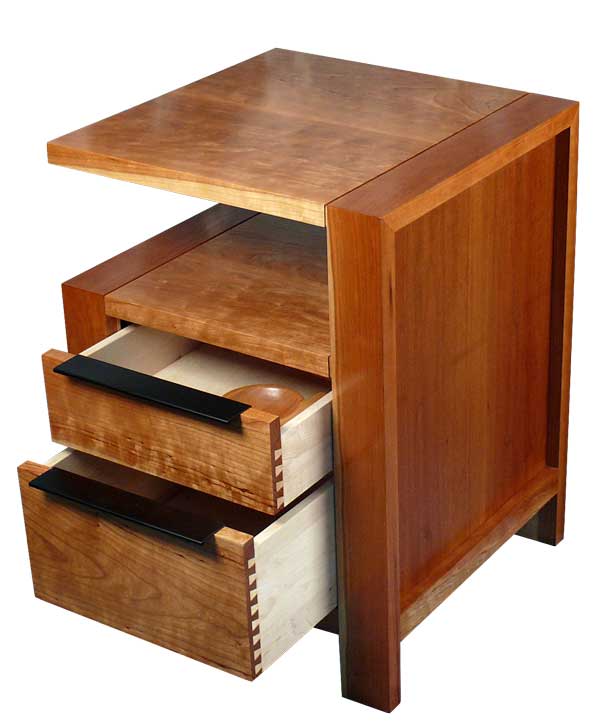
Richard Wile’s Cantilevered Night Stand is the overall Readers’ Choice winner, as well as the category Readers’ Choice winner in Casework, Cabinets & Bookshelves.
A custom metal bracket with slotted holes for movement is the magic behind the “floating top” figured-cherry night stands that Richard Wile designed for his son (only one is shown here). The magic also captured the fancy of online votes – Wile is the overall winner in the Readers’ Choice voting.
Wile has been an amateur woodworker for more than 30 years. Initially, he was drawn to 17th through 19th-century Western European furniture, but he’s spent a lot of time in Europe recently and now finds inspiration in contemporary work – Danish modern in particular.
richard-wile.blogspot.ca
Turnings, Carvings & Objets d’Art
Editors’ Choice:
James Duxbury; Graham, North Carolina
Flowing Fascination; 20″ d x 20″ w x 47″ h
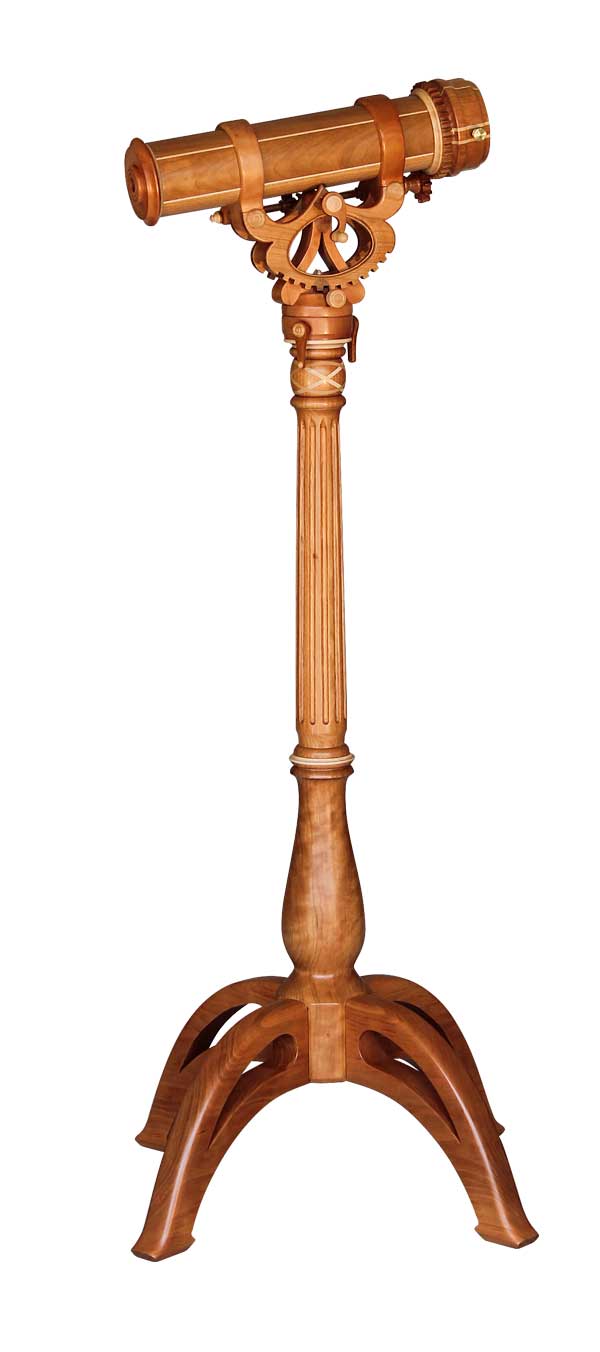
James Duxbury’s intrictae kaleidoscope, “Flowing Fascination,” is the Editors’ Choice winner in Turnings, Carvings & Objets d’Art.
This cherry and maple floor-model kaleidoscope (that breaks down for portability and storage) has a 30°, 60°, 90° mirror system, 333mm eyepiece, interior lighting and a removable, oil-filled object cell. A crank arm rotates two sets of wooden gears turning the object cell, and features an 11-position locking elevation harp with 360° horizontal swivel. The fluted stand features a Celtic knot inlay.
James Duxbury, who first learned woodworking from his finish-carpenter father, was a sheet-metal worker, HVAC contractor and properties manager before “retiring” to his shop, where he turns almost every day. He also holds two patents, including one for his Resp-O-Rator, a mouthpiece respirator designed to function well even with beards, as with ear and eye protection.
duxterity.com/ec
Readers’ Choice:
Tom Kaldunski; Farmington, Minnesota
Whitetail Woodlands; 48″ w x 36″ h
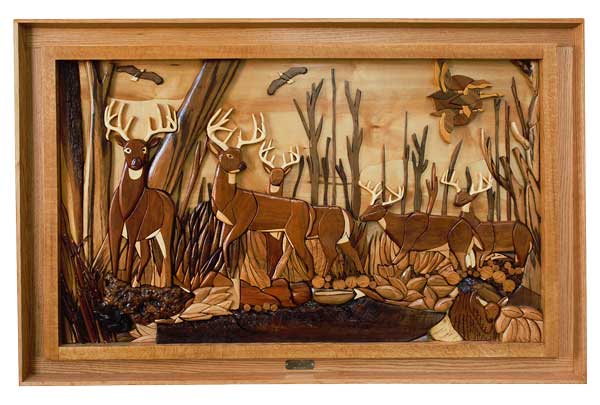
Tom Kaldunski’s “Whitetail Woodlands’ intarsia is the Readers’ Choice winner in Turnings, Carvings & Objets d’Art.
Tom Kaldunski designed the woodland theme for this piece, which uses 19 varieties of wood chosen for their various colors (along with some bark for texture) that range in thickness from 1″ to 2″. Each piece is individually cut and shaped, with special attention paid to grain direction to better evoke a natural look.
Kaldunski’s first pictures in wood were painted plywood puzzles he made with his daughters. After inheriting some publications featuring the intarsia work of Judy Gail Roberts, Kaldunksi was inspired to combine his furniture-making and puzzle skills and give it a try. He’s made more than 50 works of intarsia since. Though he hasn’t counted the pieces in “Whiteland Woodlands,” he knows there are many. Each piece was handled at least eight times during his process, and he spent more than 220 hours on the project.
As I mentioned above, the choices were difficult, so here’s a few other notable entries that were chosen by individual editors and contributors for Editors’ Choice consideration (see all of the entries by clicking here):
Here are some supplies and tools we find essential in our everyday work around the shop. We may receive a commission from sales referred by our links; however, we have carefully selected these products for their usefulness and quality.



